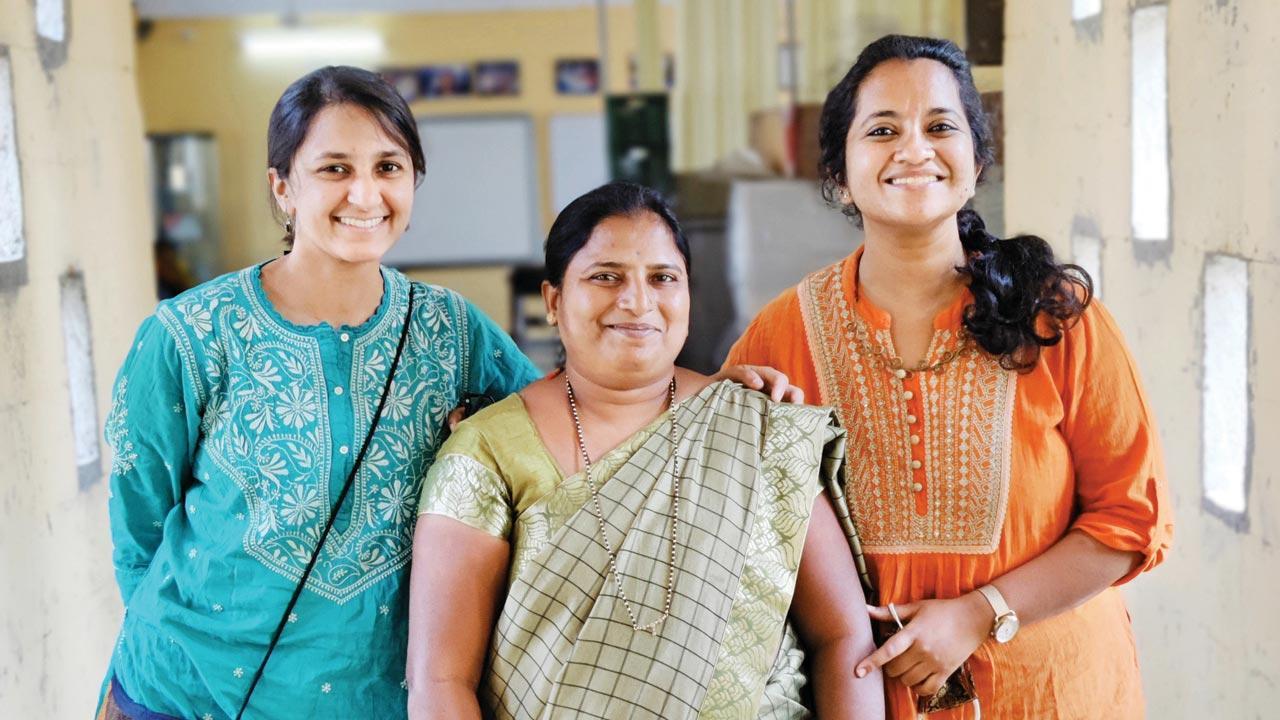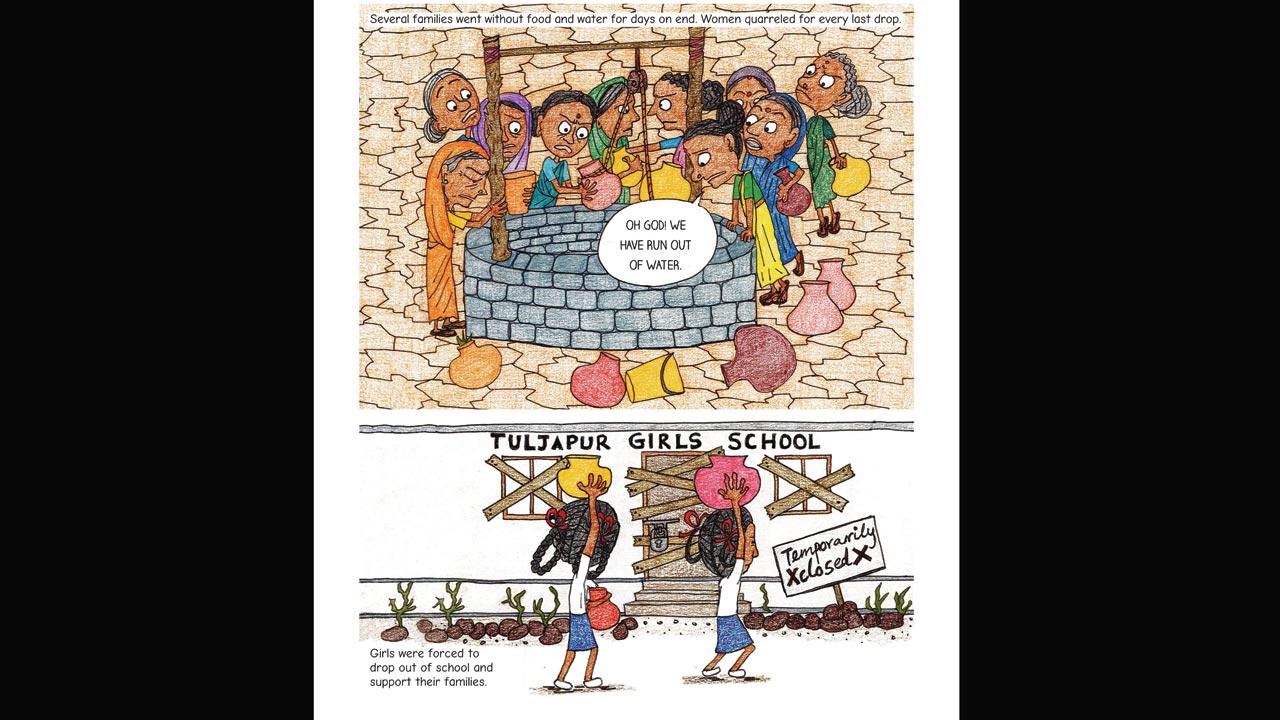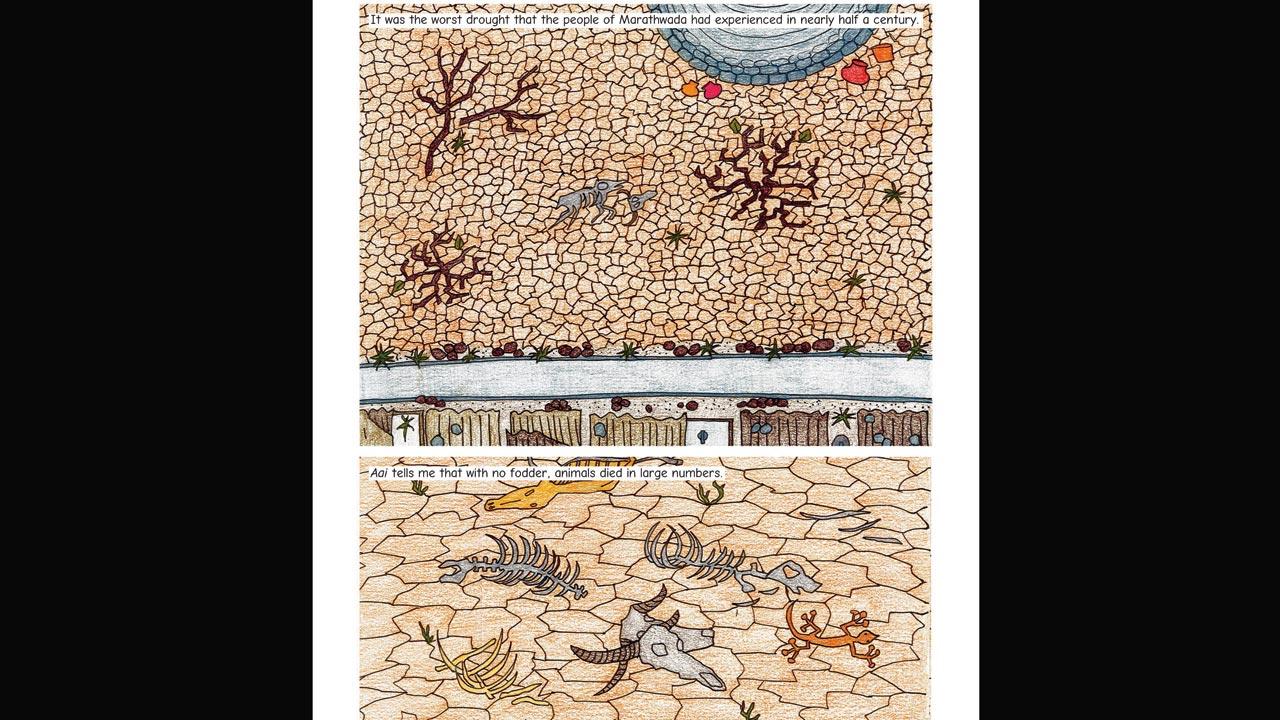A just-released comic tells the story of Tuljapur’s local heroine rallying 50,000 women from drought-ridden Marathwada to adopt the one-acre model of farming so that they could bring food to the table

Illustrator Maitri Dore (left) and journalist-writer Reetika Revathy Subramanian with Godavari Dange, who spearheaded a one-of-its-kind green revolution that’s been adopted by over 50,000 women across Osmanabad and Solapur districts
For journalist-writer Reetika Revathy Subramanian and illustrator Maitri Dore, it was a shared interest in “under-represented, indigenous feminism” that brought them together in the thick of the pandemic. An open call by Goethe-Institut (Indonesia) in 2020, inviting comic artists from around the world to submit book proposals on lesser-known feminist leaders from the Global South, as part of its Movements and Moments project, served as the impetus. Subramanian, 31, who is currently pursuing her PhD in Gender Studies as a Gates Cambridge Scholar at the University of Cambridge, UK, says the pair wanted to focus on the links between gender, agriculture, and climate change. “This is because even as women grow nearly 80 per cent of India’s food, they are not recognised as farmers; they don’t even own the land they till.”
During fieldwork in the Marathwada region of Maharashtra, she had chanced upon the work of Godavari Dange, a tour de force in the Osmanabad district. “But, there was very little known about her, except for stray mentions on a few blogs. Her work had largely gone unnoticed by the mainstream media,” she shares, explaining why Dange seemed like the perfect candidate for their storytelling project. “Maitri and I went to meet her, and then, based on her consent, we decided to send in our application.”
 As part of Dange’s one-acre model women were encouraged and trained to grow food crops, which use less water and can be grown throughout the year, in small pieces of land. Dange personally distributed 36 different varieties of food crops to the women and supported them in farming
As part of Dange’s one-acre model women were encouraged and trained to grow food crops, which use less water and can be grown throughout the year, in small pieces of land. Dange personally distributed 36 different varieties of food crops to the women and supported them in farming
Their new book, Raindrop in the Drought: Godavari Dange, available in English and Marathi, tells the story of a woman who has spent over two decades building indigenous, sustainable climate solutions, such as the innovative “one-acre model” of farming, which has helped support thousands of women in a region that’s seen alarming drought-driven suicides. The book was shortlisted among 16 others by the Institut from a pool of 218 submissions.
Born in the small town of Tuljapur in 1977, Dange grew up against the backdrop of mounting debt and distress. At the time of her birth, Marathwada was still recovering from the devastating 1972 drought—the worst the region had experienced in nearly half a century. The cyclical droughts had left the River Godavari that passes through the region, dry. People from the Dalit and Adivasi communities suffered the most, with families going without food and water for days.
 Dange grew up against a backdrop of mounting debt and distress. At the time of her birth in 1977, Marathwada was still recovering from the 1972 drought. People from the Dalit and Adivasi communities suffered the most, with families going without food and water for days on end. Courtesy/Raindrop in the Drought: Godavari Dange
Dange grew up against a backdrop of mounting debt and distress. At the time of her birth in 1977, Marathwada was still recovering from the 1972 drought. People from the Dalit and Adivasi communities suffered the most, with families going without food and water for days on end. Courtesy/Raindrop in the Drought: Godavari Dange
While Dange and her siblings were raised as equals by her parents who belonged to the marginalised Gurav community, she suffered the fate of many young women her age. Forced to drop out of school at the age of 13, she was married by 15. Tragedy struck early, when Dange lost her husband four years later, and had to return to her maternal home as a young window with two sons. Around this time, Marathwada continued to experience intense droughts. Though still recovering from personal loss, Dange decided to rebuild her life, working with the NGO Swayam Shikshan Prayog. It’s then that she learnt how most male farmers, especially from the upper castes, were growing cash crops like sugarcane that were water-intensive. This left the small and marginal farmers and their families with no resources, reeling under debt. During drought women’s labour also increased, as it was their job to make sure that there was food on the plate. It was under these circumstances that Dange along with her colleagues at SSP came up with the one-acre model in 2007-08, inspiring Subramanian and Dore’s book.
According to the model, women were trained to grow food crops, which use less water and can be grown throughout the year, on smaller pieces of land. Dange personally distributed 36 different varieties of food crop seeds to the women and supported them in farming. The focus was to ensure that nobody went hungry in the family. At the beginning, only a few women came forward, fearing backlash from their families. Today, more than 50,000 women farmers practice this model across Osmanabad and Solapur districts. “[As part of the research], we did extensive interviews with Godavari and her family, friends and women who were part of the movement,” says 34-year-old Dore, who is pursuing a PhD in cultural heritage conservation at the University of Gothenburg, Sweden. “We also took a lot of photographs of her, her home, and the surroundings where she grew up, because we wanted to reproduce this in the form of drawings.” The idea, adds Subramanian, was to also build a relationship of trust with all the stakeholders in this narrative. These conversations with them, added more layers to the story of their protagonist.
Dange, they say, was part of the book’s creation process from the word go. “Since we were telling her story from the first person perspective, we had to ensure that we did that, without taking away her voice,” says Dore. The text, as well as the art panels were usually shared with her over WhatsApp for approval. “She became a collaborator in a sense. What was amazing was how enthusiastic Godavari was. She fed us with the tiniest details including the colour of her walls. She was always forthcoming,” remembers Subramanian. The challenge, they feel, was to say more through images and little through text. “This was a comic book at the end of the day. The drawings had to be more detailed and speak for themselves. So we had to keep the language simple.”

Dore’s recurring imagery of broken, parched earth in the book is representative of the world that Dange and the other women continue to inhabit, and how their movement is still a work in progress. The authors have also attempted to cover the entire gamut of Dange’s life, her personal loss included, and the impact of the recent Coronavirus-induced lockdowns on the community; her one-acre model helped women farmers ensure that there was food on the table even during those trying months. “The work that we do in the academic space can often be very inaccessible. The comic format makes stories like Dange’s reach a wider audience,” feels Subramanian. Dore agrees. “Such a book helps transcend linguistic barriers. It can reach different kinds of audiences at the same time.” The authors are now looking at more funding to translate the book into various languages, including Hindi, because they are keen that it reaches farmers in the North, where unlike popular perception, drought is as real as it is in Marathwada.
To read the book https://www.goethe.de/ins/id/en/kul/kue/mmo/brg.html
 Subscribe today by clicking the link and stay updated with the latest news!" Click here!
Subscribe today by clicking the link and stay updated with the latest news!" Click here!










